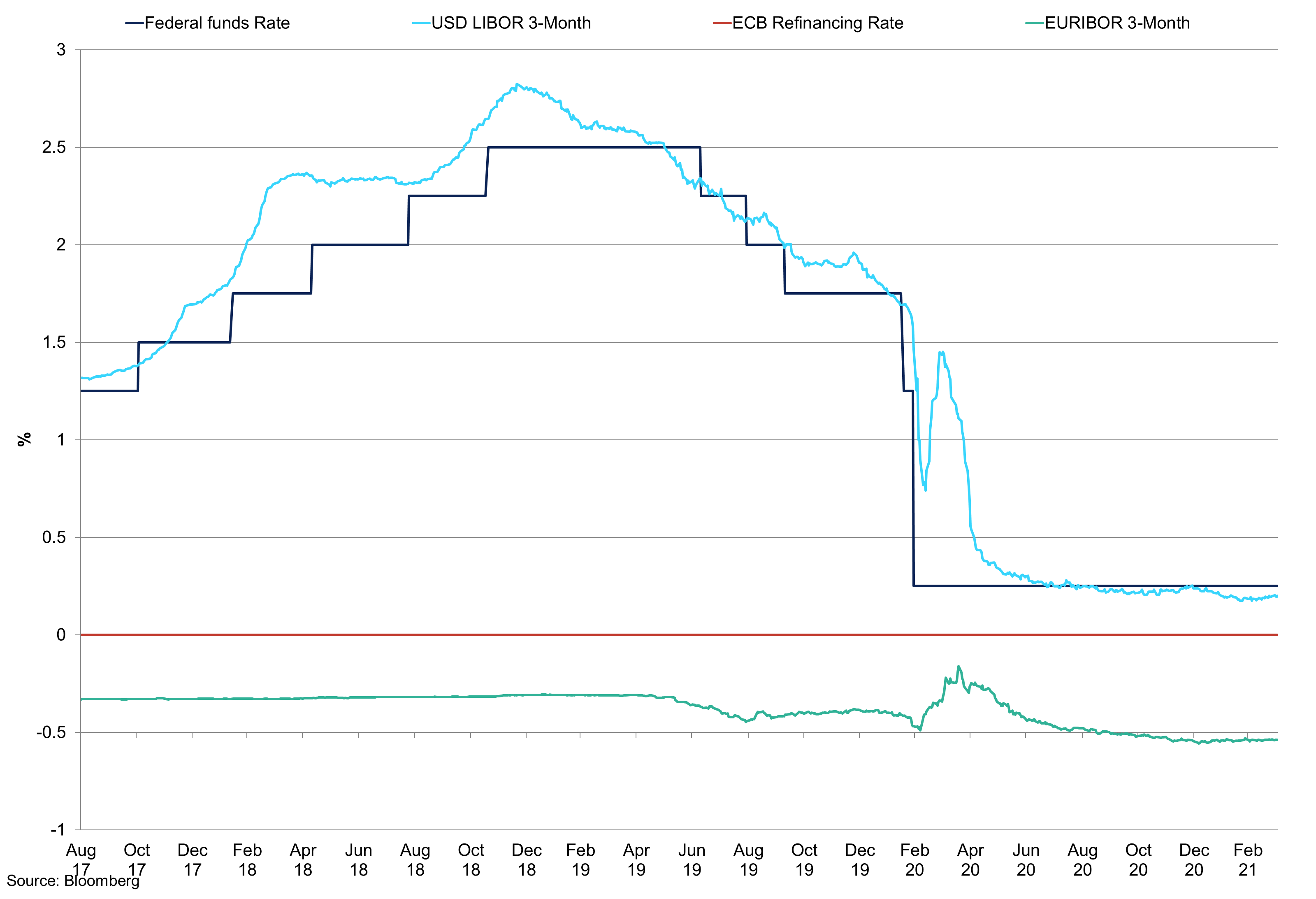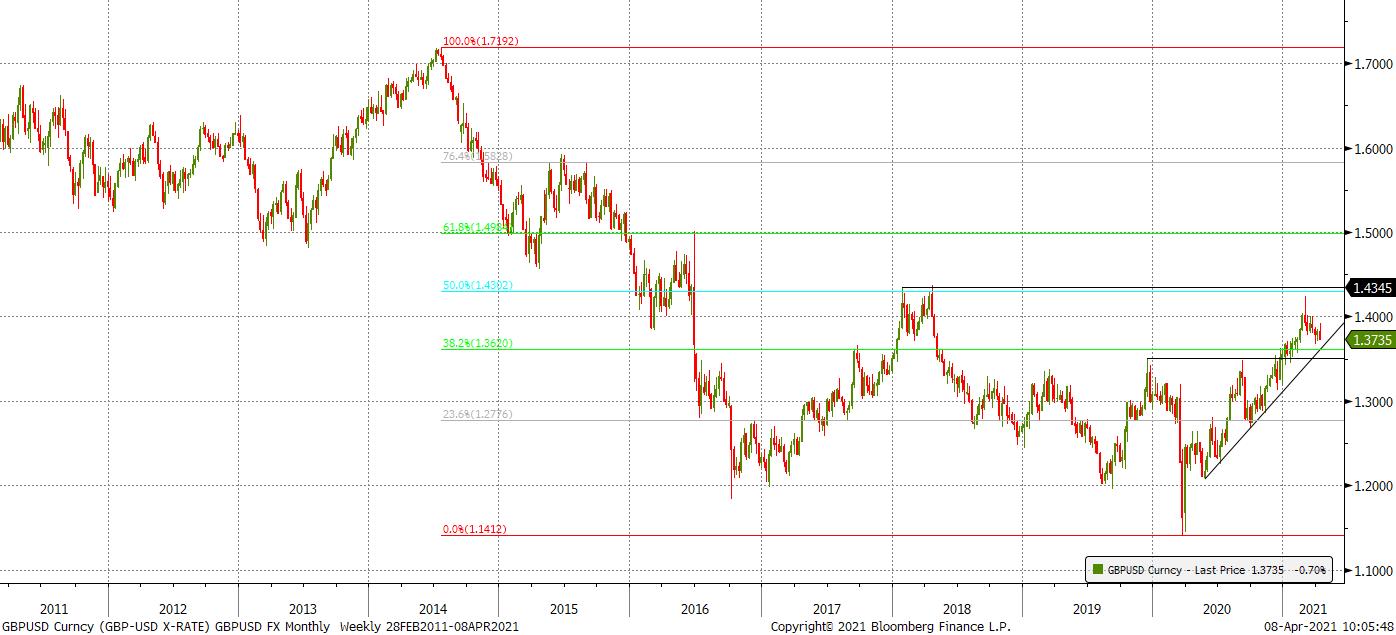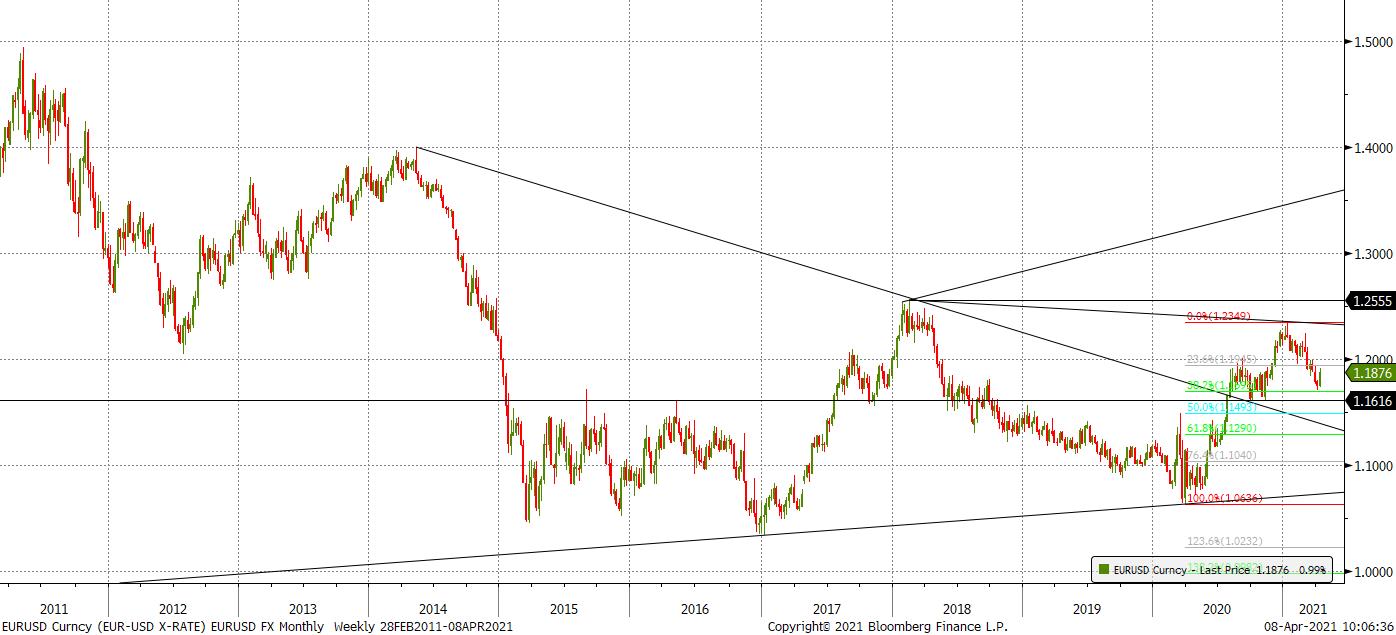Turkey’s Woes
Turkey gave back all the gains of the last few months, after President Erdogan sacked the Central Bank Chief, the market slid further following the removal of Deputy Governor Mural Cetinkaya. This caused the spot market to rally back to 8.50, a level last seen in September 2020, vols blew up with 1-month, 3-month, and 6-month ATM at 40.49%, 33.01%, and 30.08% respectively, up from 17.09%, 17.635%, and 18.16% on Friday 19th respectively. Investors fleeing Turkey have caused rates to rally, overnight borrowing rates rallied 1.400% according to Bloomberg. Local regulations limit how much banks can lend via swaps, which is helping the lira hold below 8 at this time. We continue to expect flows out of the lira to continue, and when the central bank cuts rates, this will also weaken the lira. The rate hike last week was above expectations, the lira was on a path of correction as foreign investors had faith in the long-term monetary policy. The longer-term target was lower inflation, Naci Agbal increased rates by a cumulative 875bps in his 4 months at the helm, he improved transparency by publishing FX swaps, returned to using a 1-week repo as the sole source of CBT funding for banks, and simplified frameworks for reserve requirements and remuneration.
EM Currencies YTD Performance vs WTI and Brent
Turkey’s performance is poor due to the recent Central Bank announcements.

The new governor Sahap Kavciouglu has previously shown a preference for lower interest rates, in his first statement as governor, he indicated that the Central Bank “will continue to use the monetary policy tools effectively in line with its main objective of achieving a permanent fall in inflation”. The decline in inflation will enhance economic stability, however, the new path of the Central Bank is unknown but there is sentiment that we will see rates decline once again. This would cause further headwinds to the lira. The Central Bank will likely rebuild its FX reserves in the coming years, after using these funds to boost short term liquidity. Inflation has refused to roll over and came in at 15.6% in February, we expect inflation to remain high due to higher oil prices, lower rates and a weak currency. Yields have started to weaken in recent days, the 10yr yield stands at 13.1%. Turkey’s USD CDS 5yr has risen sharply following the announcement, as of March 24th the CDS stood at $462.8, up from $306 on March 19th. Yield curves are flattening, and we expect that to remain the case. We expect the lira to remain weak in the near term, especially with the USD looking stronger than much of the market anticipated and its role as a haven currency being brought back to the forefront.
Europe and the Vaccine
Europe’s vaccination roll-out has been poor, with 60.9m doses administered as of March 25th. According to data as of January 1st, 2020, this is 13.4% of the total population. Vaccination rates in the UK and US are much higher, with the doses administered per 100 at 45.21 and 38.34 as of March 23rd. In absolute terms, doses administered are considerably higher in the US at 123.2m vs 30.69m in the UK. The row over vaccines on the continent continues as European Union looks to limit exports of the vaccine to countries that have administered more vaccines such as the UK. The latest development is that the UK and EU are working together to create a ‘win – win’ situation. We expect exports to be limited to the UK as the EU attempt to catch up, but the issue has arisen from their nervousness around the AstraZeneca vaccine. Reports have suggested that 29m does of the AstraZeneca vaccine have been found in Italy, however, AstraZeneca outlines that the vaccines were waiting for quality control, and then 13m will be released the Covax scheme, the remaining 16m were due to be dispatched to EU countries. The relationship remains fractious, but we expect deliveries to the EU to improve.
This will continue to weigh on the Euro as the economic outlook and confidence in their roll-out plan wanes. Indeed, it appears there is a third wave on the continent which will further damage investor and consumer confidence in the market. The correlation between the euro and vaccination rates in the European Union is at -0.86 as of March 26th. This is statistically significant, and the inverse correlation has been rising for some weeks. Risk appetite for the Euro has been weaker, the economy has entered a double-dip recession, we expect this to weigh on the euro, especially with the weaker vaccine policy.
Vaccination rates vs Currency (Index January 2021)
Euro has failed to perform in recent months.

Euro - Desk Comments
Euro has spent March on the back foot as risks continue to remain to the downside. However, it was not all bad for the Eurozone last month as we had some stellar PMI data, the highest reading since the start of publication. There was also a jump in sentiment and more upbeat economic data in the months ahead could create some choppiness, we believe any rallies higher in the pair will provide a good opportunity to sell the euro as our bias remains negative.
We believe the Euro will continue to be used as a funding currency as ECB remains Dovish after significantly stepping up asset purchases under the PEPP programme from next quarter in a push back against rising yields; helping to further widen rate divergence vs other majors. This coupled with fresh lockdown measures, slow vaccine rollout and confrontations with Britain over vaccines could all weigh on the euro further over the next few months.
EU and US Interest Rate vs LIBOR and EURIBOR
EURIBOR has softened in recent weeks, despite the refinancing rate holding steady.

USD - Desk Comments
The first half of March saw the continuation of the move from the start of the year with US yields rising despite Powel and the Fed maintaining their stance on interest rate expectations. Movement in yields have been at the forefront of most market participant’s minds and as a result, changes in currency movements this year have been highly correlated with yield rate differentials; in contrast to the moves in 2020. However, over the past fortnight, this correlation has changed somewhat as risk-off sentiment has crept in amid fresh lockdowns in Europe and other regions, potential vaccine wars and the sacking of another central bank governor in Turkey have all contributed. The market is realising that Re-opening economies and industries are not going to be as easy as they thought.
The recent risk-off sentiment has provided additional support to the USD against high beta currencies, but we believe this is only likely to be temporary. The loose monetary policy in place coupled with the large US fiscal stimulus package will give global economic growth a boost. Add into the mix, the general reflationary environment and it is hard not to see high yielding, EM and commodities-based currencies appreciating against the USD over the next few months.
Whilst FED is dovish, they are not the only ones with many other Central Banks taking a similar stance on keeping an accommodative monetary policy. Against fellow low yielders, USD should be one of the better performers amid the success of the US's vaccine programme and their large stimulus package. Hence, we expect the US should see their growth pickup and economy reopen fully sooner compared to other G10 countries. As we mentioned last month, we expect US growth to have picked up by Q4 to the point where the FED will not be able to shy away from discussing policy normalisation; that could catalyse the start of a new longer-term USD appreciation against most currencies.
US vs the UK vs Italy vs German 10-year yield
US yield curve continues to steepen, and the dollar strengthens.

GBP - Desk Comments
Over the last month, GBP has remained steady against a basket of currencies and has made a healthy correction against USD after overshooting in February. Britain has also had a very successful vaccination drive which has provided good support for the UK as optimism over future growth increases. We expect foreign investment to pick up as UK emerges from lockdowns and further support the UK economy's bounce back from the pandemic.
Variables that could jeopardise this positive GBP narrative is if relations with Europe deteriorate further amid vaccines and post Brexit policy discussions. Furthermore, fresh lockdowns in Europe could also spill over and have some economic impact on Britain. However, on balance conditions are favourable for the UK and we still maintain our view of a rise to the 1.50 area in cable by end of the year. Current retracement in GBPUSD could see a pullback to the 1.35/136 region first as USD remains strong in the short term and would represent a good buying opportunity in the cross. Against the Euro, we would expect EURGBP to continue lower and test the 0.83 support levels and moving closer to 0.76 area by end of the year.
Major Currency Commercial Positioning
All positioning remains below the long-term median.

Gold
Gold continued to struggle in March as the dollar firmed as the U.S 10-year yield rallied, the curve continues to steepen following the announcement by the Fed that they will keep interest rates low in the long run, allowing the economy to overheat. Inflation is unlikely to appear in the near term, and if it does appear it will only be in the U.S. Cost-push inflation could be likely as a result of the rally in raw materials, but consumers remain cautious and the savings rate is still high. All known ETF holdings have fallen 6.37% since the start of the year, we expect this trend to continue in the near term as appetite for gold continues to fade. The gold managed money net position has declined 152,000 in January 2021 to 56,010 as of March 23rd, in conjunction with ETF holdings declining suggests weaker appetite for gold. As vaccination rates improve in the majority of countries, the macroeconomic outlook will improve which could weigh on gold. There remains considerable uncertainty in the global economy, but in the next month, we could see gold consolidate, the dollar has pulled back from the recent high as has the 10yr yields, and stocks which could aid gold.
Silver
Silver edged lower in March as investors favoured other assets and the dollar strengthened. The bull case for silver remains strong, the improving vaccination rates will aid the economic backdrop, however, the industrial demand outlook for silver is likely to support the metal in the medium to long run. This is due to the ‘Build Back Better’ scenario which is being adopted by global governments to increase renewable energy production and transition to a net-zero global economy. The catalyst may be President Biden’s green stimulus bill which will aim to decarbonise the U.S. economy, solar energy will be a key focus for the plan. Silver ETFs have retreated back to 912m ounces, down from 1.016bn ounces in January. This outlines a weaker appetite for silver from investors in recent weeks, this trend is confirmed by the decline in the managed money net position which has declined from 47,633 contracts in January to 21,236 contracts as of March 30th.
Technical Charts
GBPUSD

After making a new recent high of 1.4235, GBPUSD has retraced back towards Trendline. On the upside we expect the market to test recent high and resistance @ 1.43 (50% fib of the move from 03/16 to03/20) and at 1.4382 (High from April 2018). A break of these level will lead to the next leg higher towards 61.8% fib / 1.50 psychological level. This view remains intact while downside support @ 1.35 holds. A sustained close below 1.35 would lead to a larger pull back to 1.32.
EURUSD

Euro broke below support @ 1.1950 and the 200day AVG in March and now looks poised to test support around 1.1600. If support holds, we expect the market to consolidate between 1.20 and 1.16. A sustained close below 1.16 could open the doors to a deeper correction to 1.15 and then 1.13.





